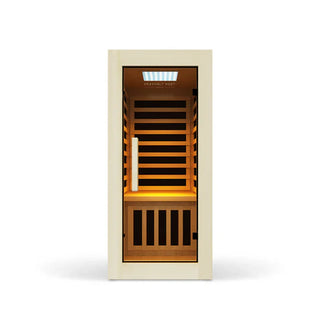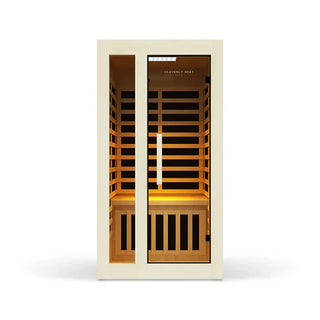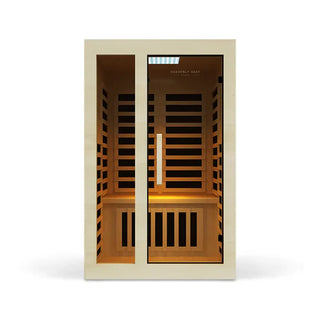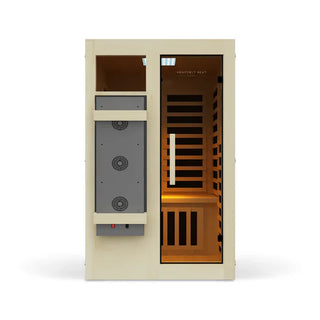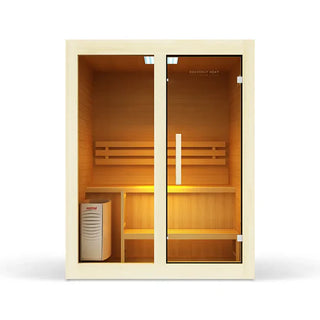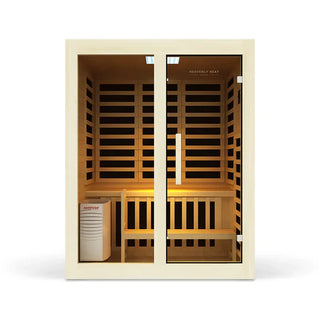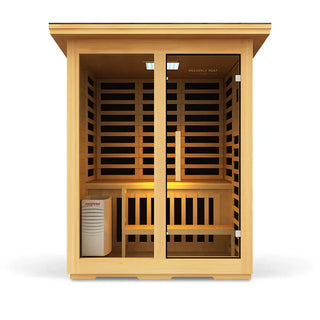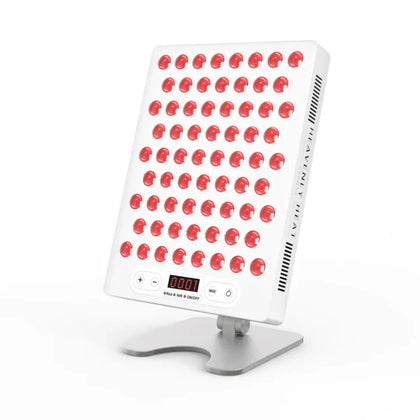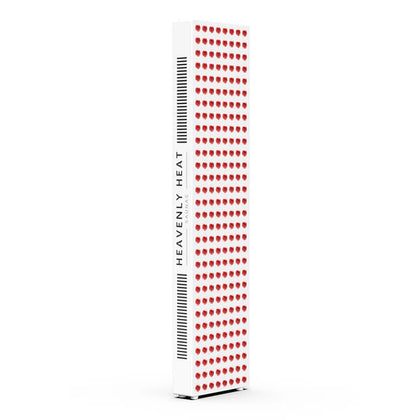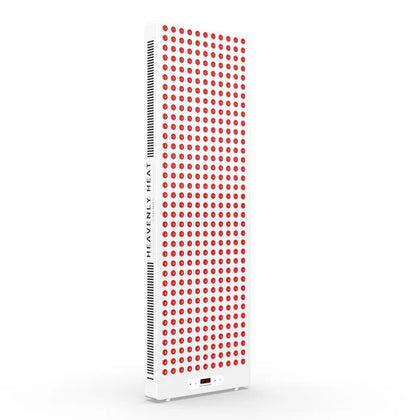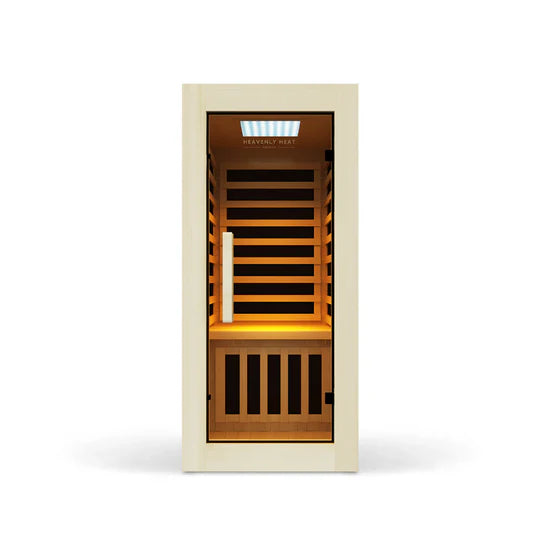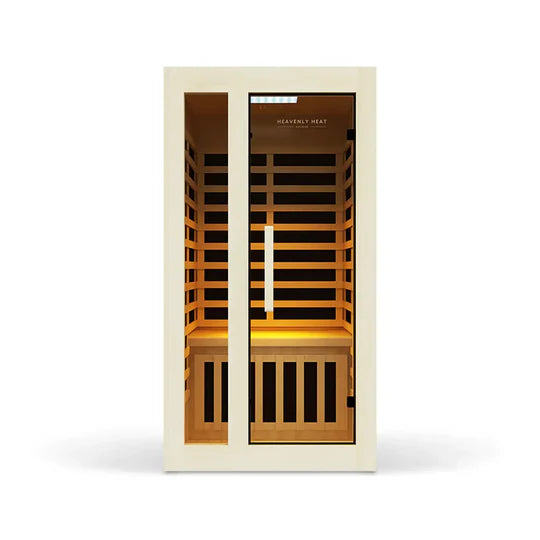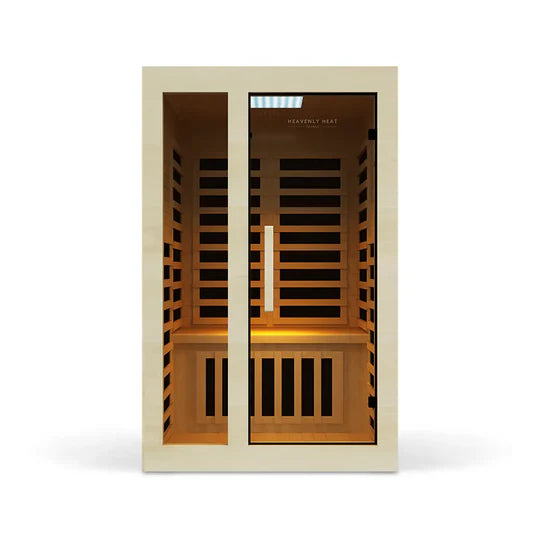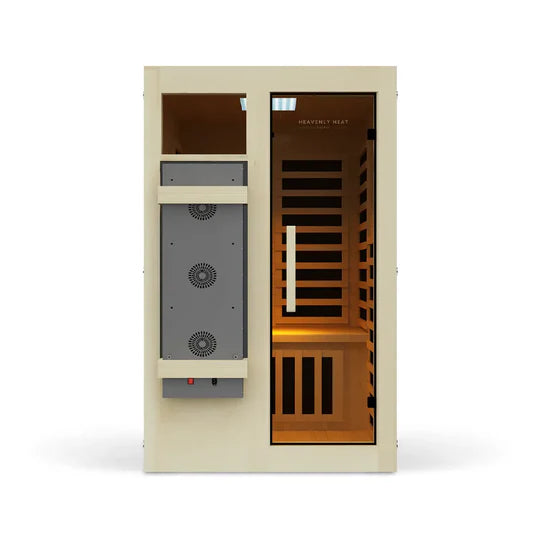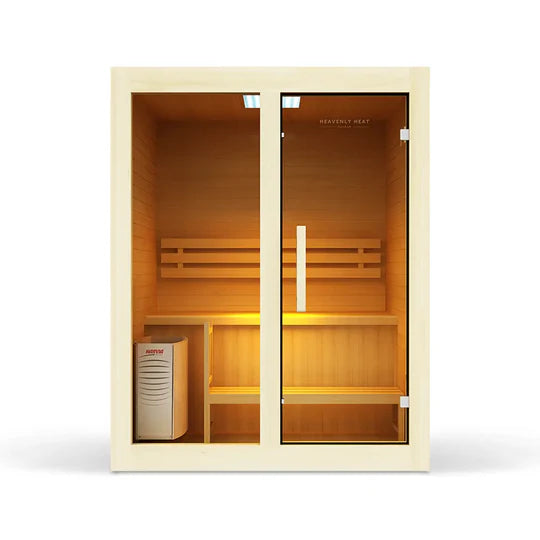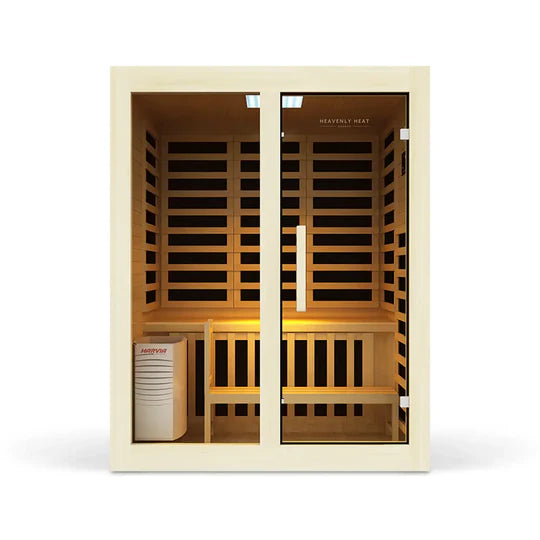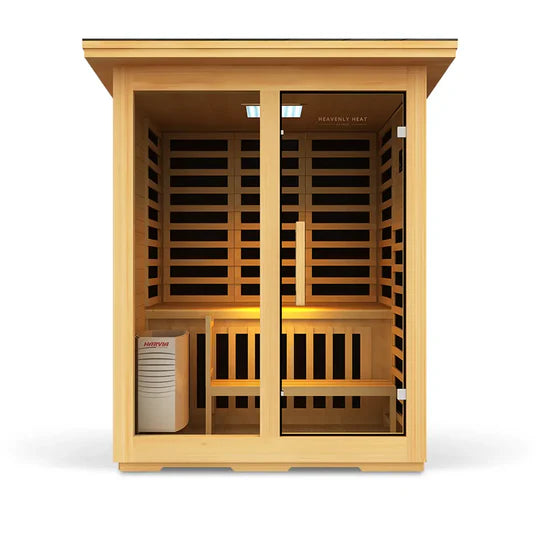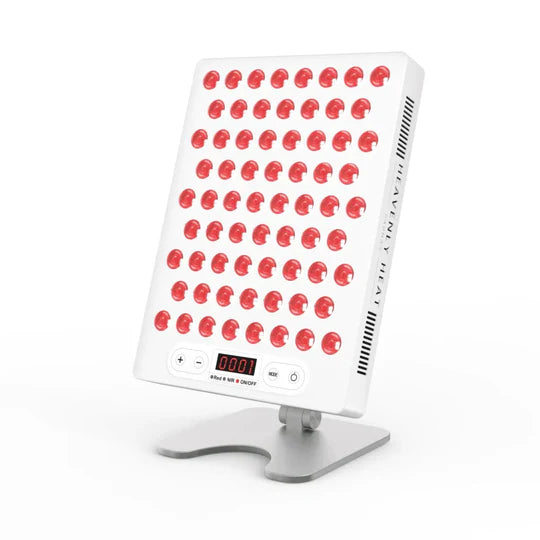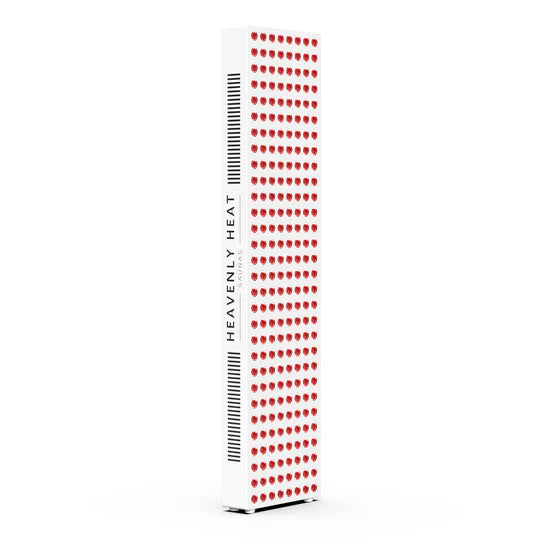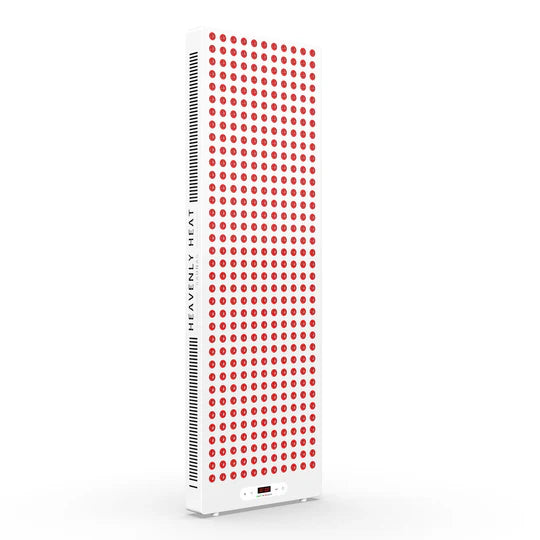12 Proven Ways to Prevent Mold in a Sauna
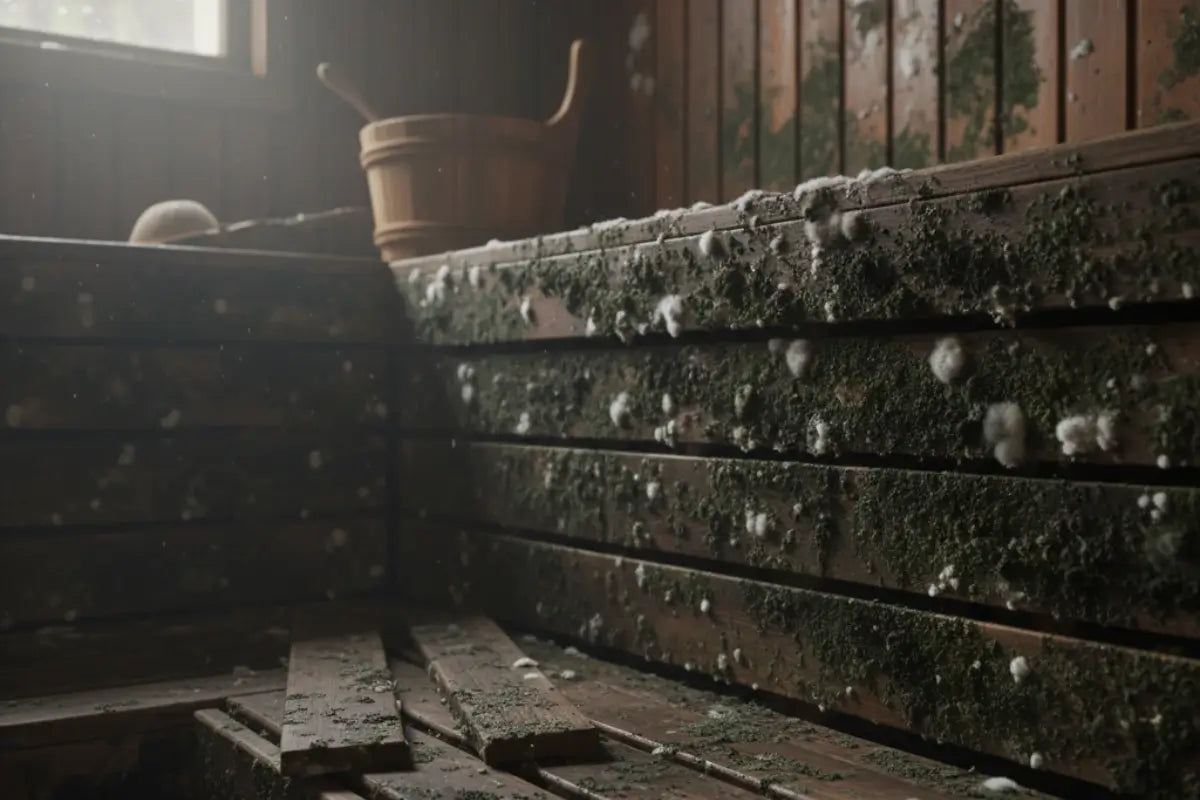
Mold can quickly turn your relaxing sauna into a health hazard. It hides in corners, damages wood, and fills the air with musty smells.
But don’t worry, there are simple ways to stop it before it starts. In this guide, I’ll show you 12 proven steps to keep your sauna clean, safe, and mold-free.
Key Takeaways
Prioritize Ventilation: Ensure steady airflow to reduce humidity and prevent mold growth.
Choose Mold-Resistant Materials: Use moisture-resistant woods and apply proper treatments.
Maintain Cleanliness: Wipe surfaces, clean towels, and sanitize regularly to stop mold before it starts.
Control Moisture: Dry your sauna after each use and monitor humidity levels to keep them safe.
Protect Health: Prevent mold to avoid respiratory issues, allergies, and wood damage.
Understanding Mold and Its Causes
Mold is a type of fungus that thrives in damp, poorly ventilated environments, and while many varieties are harmless, some can pose serious health risks, according to the National Institute of Environmental Health Sciences.
Indoors, mold grows on wet drywall, wood, carpets, and other moisture-prone materials, spreading through lightweight spores that can be inhaled.
Its presence is not only unsightly but also linked to respiratory irritation, allergic reactions, and in some cases, worsening asthma symptoms.
The most common household causes of mold include:
Water damage: From leaky roofs, plumbing issues, or flooding.
Humidity: High indoor humidity, especially above 60%, encourages growth.
Poor ventilation: Bathrooms, basements, and kitchens without airflow trap moisture.
Condensation: Cold surfaces, like windows and walls, attract dampness.
Neglected maintenance: Damp laundry, unclean HVAC systems, or clogged gutters.
Unchecked mold can impact daily life by triggering allergies, fatigue, or respiratory discomfort, making everyday tasks harder.
The good news is that mold problems are manageable. Simple steps like fixing leaks promptly, using dehumidifiers, and improving ventilation can significantly reduce risk.
For small areas, cleaning with detergent or diluted bleach is often effective, while larger infestations may require professional help.
By addressing moisture at its source, households can protect both their living environment and health. With vigilance and preventive care, mold doesn’t have to be more than a temporary nuisance.
12 Proven Ways to Prevent Mold in a Sauna
Ensure Proper Ventilation
Proper ventilation is one of the most effective ways to prevent mold in a sauna. Good airflow helps reduce moisture build-up by drying out the space quickly after each use.
This not only prevents mold but also improves air quality, making your sauna experience more pleasant and healthier.
Saunas should have 6–8 complete air changes per hour to avoid hot spots, cold zones, and trapped humidity.
Effective systems like supply ventilation, Positive Input Ventilation (PIV), and Mechanical Ventilation with Heat Recovery (MVHR) are ideal for high-heat environments.
They push out humid air, reduce condensation, and maintain a steady, clean airflow. After every session, it's important to leave the sauna door open to let it air out.
Inspect vents weekly, and do a thorough check monthly to ensure there’s no moisture or blockages.
Always keep intake and exhaust vents clear and functioning. With consistent maintenance and the right ventilation system, you can keep your sauna dry, comfortable, and mold-free for the long haul.
Install a High-Quality Exhaust Fan
A high-quality exhaust fan prevents mold by removing excess moisture. Place it near the ceiling, and ensure its airflow suits the sauna’s size. Fans can run continuously or on a timer. Larger, powerful units clear humidity more effectively.
Use Moisture-Resistant Wood
To prevent mold in a sauna, use moisture-resistant wood like Teak, Cedar, or Marine Plywood. Apply stain and sealant for protection, keep finishes smooth and sealed, cover furniture during extreme weather, and promptly wipe spills to maintain durability and prevent moisture damage.

Clean the Sauna Regularly
Clean benches, walls, and floors at least once a week, or more with heavy use. Focus on corners and behind benches where moisture collects.
Use mild, non-toxic cleaners that target mold without damaging wood. Regular cleaning removes dirt, sweat, and oils that feed mold, preventing growth and maintaining a healthy sauna.
Dry the Sauna After Each Use
Dry your sauna immediately after use. Open doors and ventilate the space to prevent mold. Fans, heaters, or natural air circulation for 30–60 minutes can speed drying.
Check benches and floors for lingering moisture. Proper ventilation stops mold and protects the wood.
Monitor Humidity Levels
To keep mold out of your sauna, keeping humidity in check is essential. Excessive humidity, especially when combined with poor ventilation, creates the perfect environment for mold to thrive, particularly on wood and in hard-to-clean areas like corners and under benches.
As noted by The American Journal of Medicine, an optimal sauna environment should maintain temperatures between 80°C and 100°C, with humidity levels between 40–70 grams of water vapor per kilogram of air and relative humidity between 10–20%. When these levels rise too high, mold can start forming quickly.
Research shared in Building and Environment confirms that mold tends to grow when relative humidity regularly exceeds 70–80%, especially in enclosed indoor environments.
Over time, this not only damages your sauna but also increases health risks such as allergies, skin irritation, and respiratory issues.
Using sensors to monitor humidity and temperature can help detect early signs of risk, making it easier to maintain a clean, healthy sauna space
Prevent Standing Water
Standing water in a sauna isn’t just a nuisance,it’s a major trigger for mold growth and material damage.
As highlighted by the Institute of Medicine, high humidity indoors, often caused by poor ventilation, creates a perfect environment for mold and bacteria to thrive.
When water is allowed to sit, it seeps into the wood, causing warping, rot, and even structural instability over time.
Research in timber and building sciences confirms that moisture weakens wood and shortens the life of sauna components.
Additionally, water near heating elements can damage them or pose fire risks. To prevent this, it’s crucial to keep sauna humidity between 10–20%, measured with a hygrometer.
Allow the sauna to fully dry after each use, leave the door open or use a fan. Cleaning also plays a vital role: mold can be safely treated with white vinegar, diluted bleach, or ammonia solutions (always spot-test first).
For longer-term protection, apply natural sauna wax and monitor water usage carefully. Simple steps like these significantly reduce mold risk and extend your sauna’s lifespan.
Apply Mold-Resistant Wood Treatments
To effectively prevent mold in your sauna, start with naturally resistant woods like cedar, hemlock, spruce, or aspen.
Cedar contains natural oils that resist moisture and decay, while hemlock offers durability without a strong scent.
Aspen stays cool and doesn’t splinter, making it great for seating. Beyond wood choice, applying mold-resistant treatments like thermal modification (Thermowood) or heat-safe oils such as paraffin can significantly reduce mold growth.
These treatments work by reducing the wood’s moisture absorption and making it less appealing to fungi.
However, in high-heat, high-humidity environments like saunas, even the best treatments typically last only 1–3 years and may need reapplication.
It's crucial to avoid traditional sealants that trap moisture. When using chemical treatments, follow safety guidelines, wear protective gear, read product labels, and ensure the treatment meets certifications like the EU’s BPR or AWPA standards.
Ultimately, combining resistant wood with proper treatment and regular maintenance offers the best long-term defense against mold.

Limit Prolonged Sauna Sessions
Long sauna sessions increase humidity, promoting mold growth. Shorter, spaced-out sessions reduce moisture buildup, improve air circulation, and help wooden surfaces and heating elements dry faster, minimizing the risk of fungal growth.
Keep Towels and Mats Clean
Keeping towels and mats clean is one of the simplest yet most effective ways to prevent mold in your sauna.
Damp fabrics are a breeding ground for mold, especially if left crumpled or hanging on hooks. Always use clean towels for each session, and hang them spread out afterward to dry fully.
Quick-drying and mold-resistant materials, like polyester, polyolefin, solution-dyed acrylic, and merino wool, are ideal.
Natural options like bamboo and linen also work, but they need proper care to avoid moisture retention.
Wash towels regularly using a heavy-duty cycle, and soak them in bleach or antimicrobial detergent if you spot mold.
Avoid microfiber and cotton if your sauna has poor ventilation, as they can trap moisture. Mold not only damages your sauna accessories but also poses real health risks, causing respiratory issues, allergies, and skin irritation, especially in those with asthma or weakened immune systems.
By choosing the right fabrics, ensuring proper drying, and cleaning thoroughly, you’ll keep your sauna safer, cleaner, and more enjoyable for every session.
Maintain Heating Elements
Dirty or neglected heating elements can encourage mold by attracting moisture and debris. Regular maintenance keeps elements clean, dry, and rust-free, preventing condensation and fungal growth nearby.
Rust can create surfaces where moisture collects, indirectly promoting mold. Routine checks and cleaning maintain a safe, mold-free sauna.
Use a Dehumidifier if Needed
Mold thrives in damp, humid environments, making saunas a perfect breeding ground, especially after use when residual moisture lingers.
A dehumidifier can play a key role in preventing mold by reducing humidity to safer levels where mold spores struggle to grow.
Ideally, sauna humidity should stay below 50% when not in use. While traditional saunas operate with low humidity during sessions, it’s the trapped moisture afterward that becomes a problem.
Using a dehumidifier in the surrounding area can speed up drying, reduce condensation on wood, and help maintain healthy air moisture levels, ideally between 40–50%.
Studies have shown that dehumidifiers significantly reduce mold growth by keeping air dry enough to stop spores from multiplying.
For smaller or colder spaces like basement saunas, desiccant dehumidifiers work well, while compressor types are more energy-efficient for heated areas.
For best results, choose a unit with a built-in hygrometer to automatically manage humidity. This simple step can make a big difference in keeping your sauna mold-free
Symptoms and Signs of Mold Growth in a sauna
Visible Patches: Dark or green patches indicate mold growth on surfaces.
Musty Odor: Persistent musty smell shows hidden mold.
Wood Damage: Soft, swollen, or warped wood signals moisture damage.
High Humidity: Excess condensation means high humidity encouraging mold.
Paint Issues: Peeling paint or stains reveal mold underneath.
Slippery Surfaces: Slippery floors or benches result from mold or mildew.
Health Symptoms: Sneezing, coughing, or allergies suggest airborne mold spores.
FAQs
How often should you clean a sauna to prevent mold?
To prevent mold in a sauna, wipe surfaces daily after use, ensure proper ventilation, and use towels on benches. Perform a deep clean monthly, scrubbing wood and floors with gentle cleaners. Increase cleaning frequency for high-traffic saunas to maintain hygiene and reduce moisture buildup.
What natural remedies can prevent mold in a sauna?
To prevent mold in a sauna naturally, ensure proper ventilation, wipe surfaces dry, use towels to absorb sweat, clean regularly with vinegar or tea tree oil, choose mold-resistant woods like cedar, avoid sealed wood, and perform after-session drying by keeping heat and airflow active.
Is mold in a sauna dangerous to your health?
Mold in saunas can pose serious health risks, especially in poorly ventilated or damp environments. Common molds like Cladosporium, Penicillium, and Aspergillus, often found in humid places like saunas, can trigger respiratory issues, skin irritation, and worsen asthma. As noted by the Centers for Disease Control and Prevention (CDC), exposure to mold may cause symptoms such as coughing, wheezing, sore throat, or skin rashes. Those with asthma, allergies, or weakened immune systems are especially vulnerable. While public health agencies don’t always offer sauna-specific guidelines, they do emphasize key mold prevention strategies: proper ventilation, moisture control, and regular cleaning. Building codes also recommend waterproof materials and effective air circulation to reduce mold growth. Research and reports from organizations like the CDC and NIH have linked mold exposure in damp environments, including saunas, to conditions like eczema, allergic rhinitis, and even hypersensitivity pneumonitis. To stay safe, it's essential to dry your sauna after use, control humidity levels, and clean all surfaces regularly. A well-maintained sauna isn't just relaxing, it’s healthier, too


